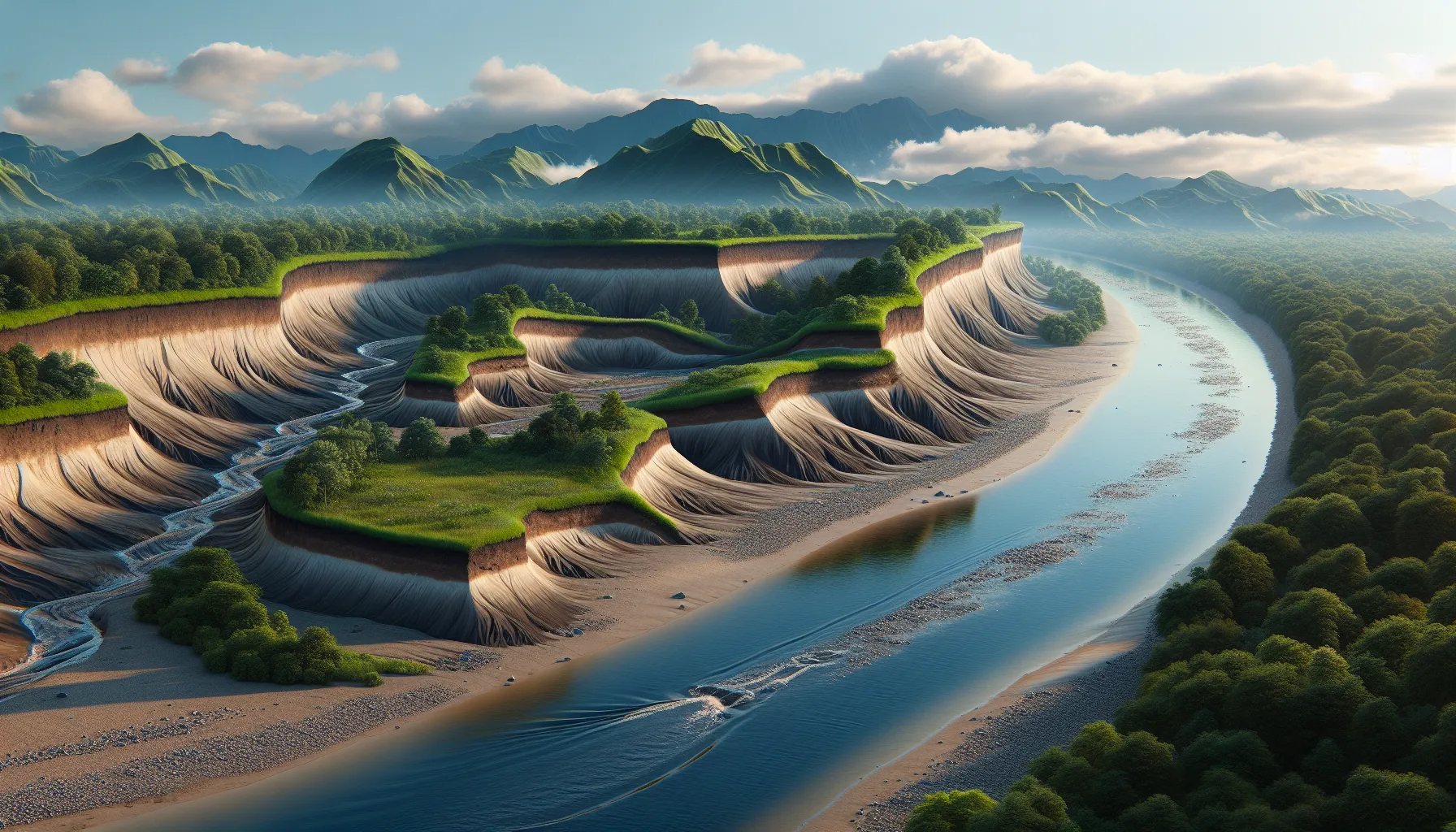Key Takeaways
- Deposition is a phase transition where a substance changes directly from a gas to a solid, bypassing the liquid state, and is the reverse of sublimation.
- Natural examples of deposition include frost forming on cold surfaces and snowflake development in clouds, both resulting from water vapor solidifying under specific conditions.
- Deposition plays a critical role in geology and aquatic ecosystems, forming features like sand dunes, river deltas, and lakebeds through the accumulation of sediments.
- Industrial applications of deposition include processes like chemical vapor deposition (CVD) and physical vapor deposition (PVD), which are crucial for manufacturing semiconductors, coatings, and nanomaterials.
- Researchers utilize deposition techniques to study crystal growth, material properties, and environmental phenomena under controlled laboratory conditions.
Have you ever wondered how frost forms on a chilly morning or how delicate snowflakes take shape? These everyday wonders are perfect examples of a fascinating scientific process called deposition. It’s one of those natural phenomena that often goes unnoticed, yet it plays a significant role in shaping our environment.
In simple terms, deposition is when a substance changes directly from a gas to a solid without passing through the liquid phase. It’s like skipping a step in the usual transformation process, and it’s as cool as it sounds—literally! From forming frost on windows to creating intricate patterns in nature, deposition is a process that connects science with beauty in the most unexpected ways.
Understanding Deposition In Science
Deposition in science refers to a phase transition where a substance changes directly from a gas to a solid, bypassing the liquid state. This process is also called desublimation and is the reverse of sublimation, where a solid converts directly to a gas. Deposition occurs under specific conditions, such as low temperatures and high pressure, which reduce the energy of gas particles enough to arrange into a solid structure.
Frost formation is a common example of deposition. Water vapor in the air settles on cold surfaces like car windows or grass blades and solidifies into ice crystals without forming liquid water. Snowflake development in clouds follows a similar principle. Water vapor crystallizes directly around tiny particles, creating intricate patterns that never pass through a liquid phase.
Deposition also impacts industrial applications. It plays a role in processes like chemical vapor deposition (CVD), which deposits thin films of material onto surfaces for electronics, optics, and nanotechnology. This ability to control and apply deposition makes it vital in advancing various technological fields.
The Process Of Deposition

Deposition involves the transformation of a gas directly into a solid, bypassing the liquid phase. This process unfolds through intricate physical changes under specific environmental and material conditions.
How Deposition Occurs
Deposition occurs when gas molecules lose enough energy to solidify without liquefying. Energy loss happens as thermal motion decreases due to cooling or increased pressure. For example, in frost formation, water vapor molecules near freezing surfaces lose heat rapidly, allowing them to arrange into solid crystal structures.
In controlled settings, such as chemical vapor deposition (CVD), this process involves the introduction of reactive gases at precise temperatures and pressures. These gases chemically react or adhere to surfaces, resulting in solid thin films.
Factors Affecting Deposition
Temperature impacts how quickly substances undergo deposition. Cooler temperatures slow molecular motion, increasing crystal formation likelihood. Frost forms on cold mornings because surfaces, like leaves and windows, cool rapidly and create ideal conditions.
Pressure plays a critical role by influencing gas molecule behavior. High-pressure environments compress gas molecules closer together, facilitating solidification. For instance, atmospheric pressure changes affect snowflake formation in storm clouds.
Surface properties determine deposition outcomes as well. Rough or porous surfaces provide more nucleation sites, accelerating solid crystal development. This principle is evident in how frost adheres more readily to textured objects than to smooth ones.
Examples Of Deposition In Nature

Deposition plays a significant role in shaping natural environments. This process directly impacts geological formations and aquatic ecosystems.
Deposition In Geology
Geological deposition refers to the accumulation of sediments transported by wind, water, or ice. For instance, sand dunes form when strong winds deposit sand grains in arid regions. Glacial deposition occurs when glaciers transport and leave behind sediments like rocks and soil as they melt and retreat. Volcanic areas also showcase deposition through ash layers settling after eruptions.
Deposition In Water Bodies
Deposition in water bodies typically involves sediments settling from rivers, streams, or ocean currents. River deltas emerge when sediments accumulate at river mouths, like the Mississippi River Delta. Lakes may develop sedimentary layers over time through particles sinking to the bottom. In coastal ecosystems, deposition encourages beach formation by depositing sand and other particles from waves and tides.
Deposition And Phase Change

Deposition directly changes a substance from a gaseous state to a solid without passing through the liquid phase. This phase change illustrates how matter can shift between states under specific conditions.
Transition From Gas To Solid
During deposition, gas molecules transform into solid particles as they lose thermal energy. When temperatures drop and gas molecules cool, their kinetic energy decreases, causing them to settle on surfaces and form a solid structure. For example, frost develops on windows when water vapor in the cold air solidifies. Unlike freezing, which involves a liquid phase, deposition bypasses it entirely.
In controlled scientific applications, deposition supports crucial processes like thin-film production through chemical vapor deposition (CVD). This technique uses high-temperature reactive gases, efficiently creating solid layers for electronics and optical devices.
Role In Environmental Science
Deposition influences natural ecosystems by contributing to geological and atmospheric phenomena. It forms frost, snowflakes, and ice crystals, shaping seasonal landscapes. In atmospheric science, deposition aids in weather formation and contributes to the global water cycle.
In landforms, sedimentary deposition from wind, water, or ice builds features like sand dunes, river deltas, and lakebeds. Glacial deposition leaves behind moraines and till, influencing terrains over time. These processes underline deposition’s impact on Earth’s environmental systems and its role in shaping habitats.
Applications Of Deposition In Science
Deposition plays a critical role in multiple scientific fields, ranging from industrial manufacturing to experimental research. It serves as a foundational process for creating complex materials and understanding natural phenomena.
Industrial And Technological Uses
Industries rely on deposition techniques, such as chemical vapor deposition (CVD) and physical vapor deposition (PVD), for producing high-performance materials. CVD is instrumental in manufacturing semiconductors, where thin films of silicon or other compounds are deposited to create integrated circuits. Similarly, PVD enables the formation of protective coatings on tools and machine parts, increasing durability and resistance to wear.
In nanotechnology, deposition technologies support the fabrication of nanoparticles and nanofilms used in sensors, medical devices, and energy storage systems. For instance, solar cell production leverages deposition processes to create light-absorbing layers, improving their efficiency. These applications demonstrate deposition’s versatility in advancing technology and meeting specific material requirements.
Deposition In Experimental Research
Researchers use deposition to investigate material properties and phase transitions under controlled conditions. By manipulating variables like temperature and pressure, scientists can simulate conditions where gases solidify without liquefying, enabling the study of crystal growth mechanisms and molecular behavior.
High-precision experiments often involve tools like electron microscopes to analyze deposition outcomes, such as the structure of newly formed solids. For example, deposition experiments help develop advanced materials, including superhydrophobic surfaces and superconductors. Additionally, study outcomes from laboratory-scale deposition contribute to advancements in environmental science, improving understanding of frost formation, snowflake development, and atmospheric processes.
Conclusion
Deposition is a fascinating process that connects the natural world with cutting-edge technology. From the intricate beauty of frost and snowflakes to the precision of advanced manufacturing, it plays a vital role in shaping our environment and driving innovation.
Whether it’s forming geological landscapes or enabling breakthroughs in nanotechnology, deposition reminds us how science bridges the everyday with the extraordinary. Understanding it not only deepens our appreciation for the world around us but also highlights its potential to inspire future discoveries.
Frequently Asked Questions
What is deposition in science?
Deposition is a phase transition where a substance changes directly from a gas to a solid without becoming a liquid, also known as desublimation.
What causes deposition to occur?
Deposition occurs under specific conditions like low temperatures and high pressure, which reduce the thermal energy of gas molecules, causing them to solidify.
What are common examples of deposition?
Examples include frost forming on cold surfaces and snowflakes crystallizing in clouds from water vapor.
How does deposition differ from sublimation?
Deposition is the gas-to-solid transition, while sublimation is the solid-to-gas transition without passing through the liquid state.
What role does deposition play in nature?
Deposition shapes natural environments through processes like frost formation, snowflake creation, geological sediment deposition, and delta formation in rivers.
What is chemical vapor deposition (CVD)?
CVD is a controlled deposition process where gases react at specific temperatures and pressures to create solid thin films, often used in manufacturing.
How does surface roughness affect deposition?
Rough surfaces provide additional nucleation sites, enhancing the crystallization process during deposition.
What industries benefit from deposition technology?
Industries like electronics, nanotechnology, and manufacturing use deposition methods to create semiconductors, protective coatings, and nanomaterials.
Is deposition important in technological advancements?
Yes, deposition advances technologies by facilitating nanofilm production, material research, and the development of high-performance devices.
How does deposition contribute to environmental processes?
Deposition drives atmospheric phenomena like frost, snow, and sedimentation, influencing ecosystems, seasonal landscapes, and the water cycle.

